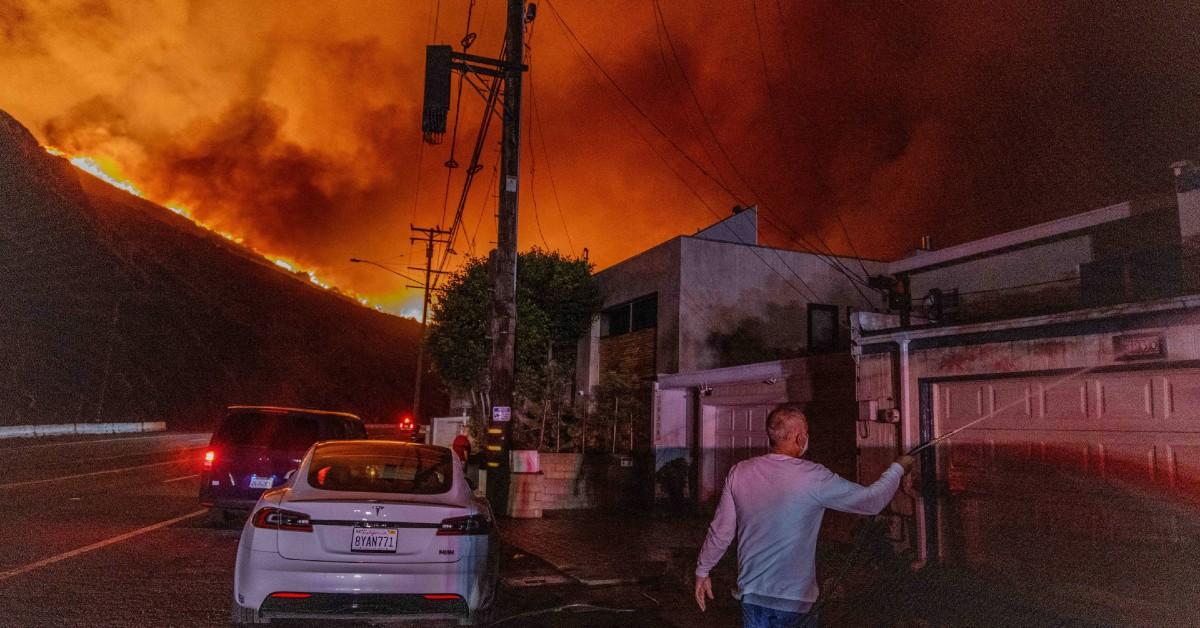News
Climate Scientist Warns of worsening conditions as Palisades Fire intensifies and winds disrupt flights.

High winds are wreaking havoc on firefighting efforts in Los Angeles, where multiple wildfires are intensifying. An estimated 1,000 structures have succumbed to the flames as relentless winds ground essential firefighting aircraft. In response to the escalating crisis, California Governor Gavin Newsom has declared a state of emergency, with reports of two fatalities emerging amid the chaos.
On Wednesday morning, the power of the winds became evident as gusts soared up to 100 MPH, prompting officials to suspend air operations around 8 AM. Margaret Stewart from the Los Angeles Fire Department stated that conditions would be closely monitored to assess when aircraft could resume their missions. L.A. County Fire Chief Anthony Marrone had previously warned that increasing winds would hinder aviation support. Newsom emphasized the dangers of deploying aircraft in such extreme conditions, explaining that high winds would rapidly disperse water or fire retardant dropped from planes.
As of the latest updates, over 30,000 residents in the Palisades have been ordered to evacuate. The Department of Forest and Fire Protection reported no containment of the major blazes—Palisades, Eaton, Hurst, and Woodley—having burned approximately 5,742 acres. However, the Tyler wildfire is reportedly 50 percent contained.
UCLA climate scientist Daniel Swain provided sobering insights during a briefing, stating, “This event is not only not over, but it is just getting started and will get significantly worse before it gets better.” He warned that the strongest winds and lowest humidity levels are still forthcoming, amplifying dangers for those in proximity to the fires.
The National Weather Service predicts that the current windstorm could be the most catastrophic the region has faced since 2011. Although the peak of the winds is expected to last through Wednesday night, high fire hazard conditions are anticipated to persist throughout the week. Swain remarked that as winds continue, vegetation will become increasingly dry, raising the fire risk.
Further compounding the wildfire threat are extreme drought conditions plaguing Southern California. Alex Hall, director of the UCLA Center for Climate Science, noted a particularly hot summer with minimal rainfall during the typical wet season. This pattern follows two years of above-average precipitation, creating abundant fuel for wildfires.
Residents have been advised to conserve water amid rising reports of dry hydrants. The situation in Los Angeles remains dire, with officials and scientists alike expressing concern over the continuing severity of the wildfires and their associated risks.
